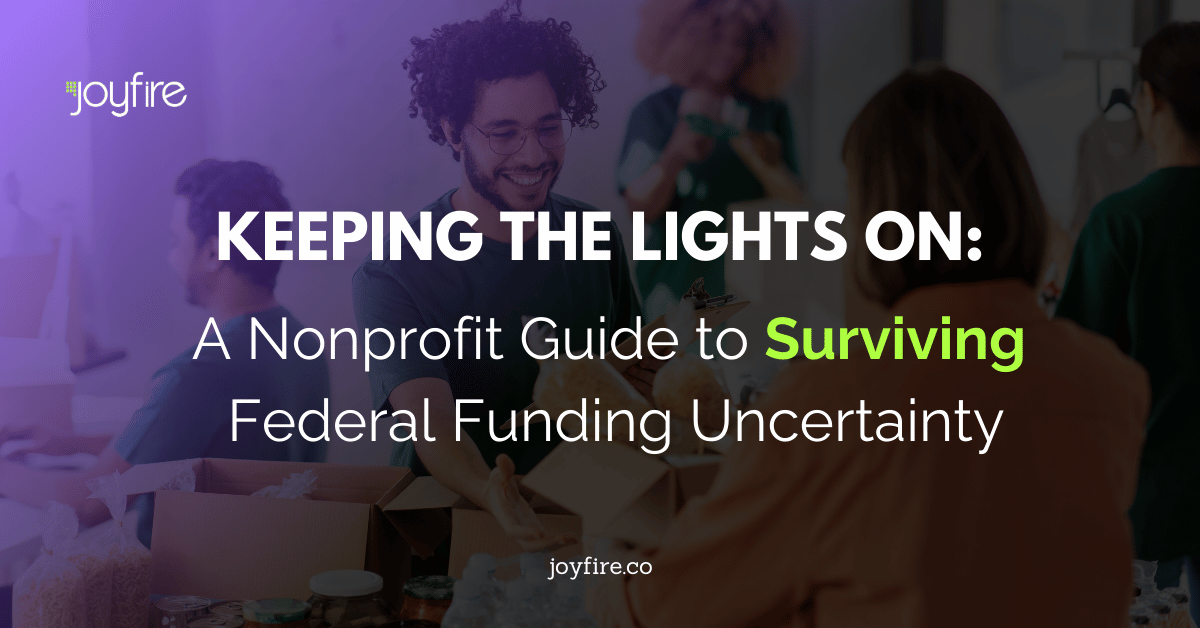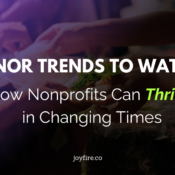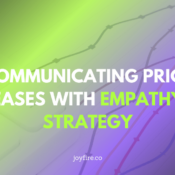
Keeping the Lights On: A Nonprofit Guide to Surviving Federal Funding Uncertainty
As I write this on January 30, 2025, nonprofit leaders across the country are living in a state of limbo. One executive director of a domestic violence shelter told me yesterday, “I keep staring at our mission statement on the wall. It reminds me why we’re fighting so hard to keep our doors open.” This is exactly where to start – with an unwavering commitment to mission.
The Current Reality – Keep Your Mission in Focus
Let me be direct⸺ we’re in uncharted waters. While a federal judge has temporarily blocked the funding freeze until February 3, uncertainty looms. Tommy Sheridan of the National Head Start Association mentioned that some programs were unable to access the Payment Management Services (PMS) platform for drawing grant funds, which is critical for grant disbursement.
Many non-profits are facing the possibility of reducing services, cutting vital programs, or even shutting down entirely. Meg Garvin, executive director of the National Crime Victim Law Institute, described the situation as a “devastating blow” to nonprofits like theirs.
Yet, amid these challenges, successful leaders need to keep their mission front and center in every conversation.
Build A Mission-Centered Action Plan
- More Than Ever, Communicate Everything Through A Mission Lens
- Track how funding issues directly impact your beneficiaries (Example: “Today we had to waitlist three families seeking legal services”).
- Connect every financial challenge to a human story
- Record specific examples of community needs going unmet due to funding gaps
- Track how funding issues directly impact your beneficiaries (Example: “Today we had to waitlist three families seeking legal services”).
- Assess Your Mission-Critical Operations
- Identify which programs directly serve your most vulnerable constituents (Example: If you work with foster families, calculate exactly how many children and families each program supports).
- Map programs to funding sources, prioritizing those that maintain core services
- Identify which programs directly serve your most vulnerable constituents (Example: If you work with foster families, calculate exactly how many children and families each program supports).
- Engage Your Mission Champions
- Consider hosting informal discussions where donors can learn more about your organization’s challenges and proposed solutions.
- Connect with other nonprofit executives who have navigated similar situations. Their experiences and insights can provide valuable perspectives as you chart your organization’s course forward.
- Consider hosting informal discussions where donors can learn more about your organization’s challenges and proposed solutions.
Master The Art Of Mission-Centered Messaging
Once you’ve assessed your priorities and engaged key supporters, the next step is to make sure every message you put out reinforces your mission. I know you know this, but let me say this anyway ⸺your mission is your north star. When communicating with donors, focus on how your organization’s work directly impacts the community you serve.
Create Urgency Without Panic
Donors respond to urgent needs, but panic can overwhelm or discourage them. Frame challenges in a way that invites action.
❌ Don’t say – “We’re facing a funding crisis.”
✅ Do say – “Every night, our shelter provides safety to 45 women and children. Here’s how you can help us keep our doors open.”
❌ Don’t say – “Federal funding may be cut.”
✅ Do say – “Our mission to protect survivors remains unchanged. Here’s how we’re adapting to serve them.”
❌ Don’t say – “We’re facing an uncertain future.”
✅ Do say – “Every day, 25 youth find safety and support in our LGBTQ+ center. Your partnership ensures our doors stay open to every young person who needs us.”
Use Numbers That Tell a Story
Rather than focusing on financial gaps, show the tangible impact of donor support with real numbers.
❌ Don’t say – “We might have to cut programs.”
✅ Do say – “Each month, 120 children learn to read in our afterschool programs. Your support ensures these young minds continue to grow.”
❌ Don’t say – “We need to fill a funding gap.”
✅ Do say – “Each night, 60 people experiencing homelessness find warmth and dignity in our shelter. Together, we can continue providing this essential haven.”
❌ Don’t say – “Our budget has been severely impacted.”
✅ Do say – “Every week, our food pantry provides fresh, healthy meals to 300 families. Together, we can keep our community nourished.”
❌ Don’t say – “We’re struggling to maintain operations.”
✅ Do say – “Thanks to supporters like you, 50 seniors receive daily care and companionship. Here’s how we can ensure they’re never alone.”
Empower the Donor as Part of the Solution
Instead of framing your nonprofit as the victim, show donors how they can be part of the solution and make a lasting impact.
❌ Don’t say – “We need emergency funding.”
✅ Do say – “Your partnership helps us serve 75 veterans daily with housing, job training, and hope. Here’s how you can continue this vital work.”
❌ Don’t say – “Federal grants are frozen.”
✅ Do say – “Your commitment to our mission has helped 90 immigrants achieve citizenship this year. Let’s continue building dreams together.”
❌ Don’t say – “Our resources are stretched thin.”
✅ Do say – “Your support means 30 families receive mental health care regardless of their ability to pay. Here’s how we can continue healing together.”
Some of this is “Donor Comms 101,” but it has never been more important to remember that shifting your messaging from crisis language to mission-driven impact invites donors to step in as partners in your mission. This is far more sustainable than finding “funders.”
Leadership in Action
As a nonprofit leader, “Job One” right now is to keep your team connected to your mission daily and provide guidance and strategy for these uncertain times.
Here are some practical steps to take operationally ⸺
- Hold a mission-centered board (and team) meeting and come up with contingency plans to maintain core services.
- Create your stakeholder communication plan
- Draft emails that lead with mission impact
- Prepare talking points for your team that focus on community needs
- Plan individual reach-outs to major donors.
- Create social media campaigns featuring real stories (Example -“Meet Maria, a mother of two who depends on our services.”).
- Host a “town hall” webinar to update donors transparently.
- Draft emails that lead with mission impact
- Get into the numbers (Know Your “Stuff”)⸺
- “We serve 150 meals daily”
- “We house 45 families each night”
- “We provide legal aid to 200 individuals monthly”
- “We serve 150 meals daily”
Final Thoughts
This temporary reprieve until February 3 isn’t just about preparing financially—it’s about reinforcing your mission’s importance to every stakeholder, board member, team member, potential donor, etc. Whether working with foster children, providing legal services, serving meals, or supporting survivors, your mission remains constant even when funding streams change.
Your mission is your anchor. The next few weeks (or years) may be tough, but by leading with impact, engaging your supporters, and adapting to challenges, your nonprofit can weather this storm and continue serving those who need you most.
Start today by reaching out to a major donor, reviewing your messaging, or convening a mission-centered team meeting. Your next step matters.




